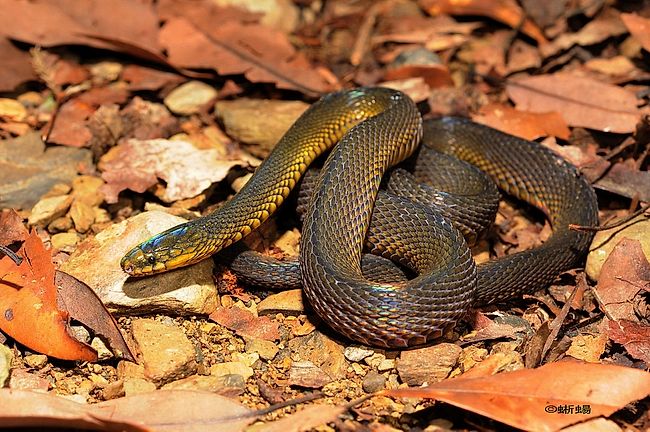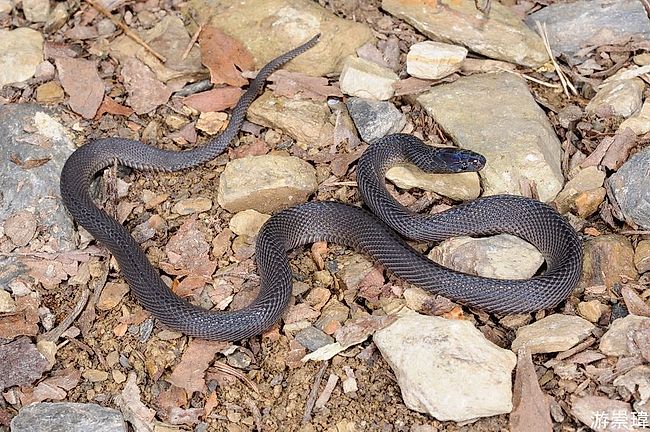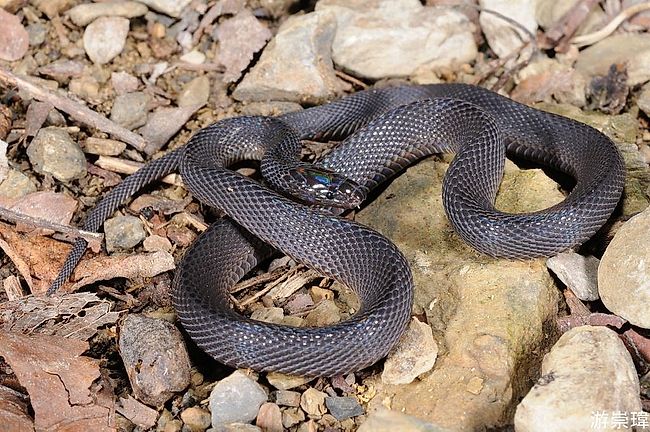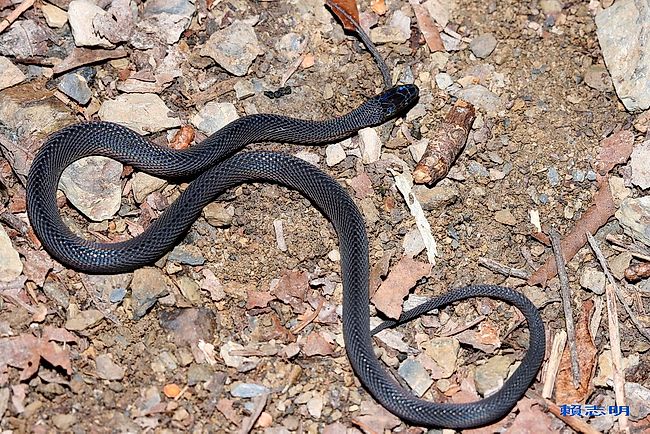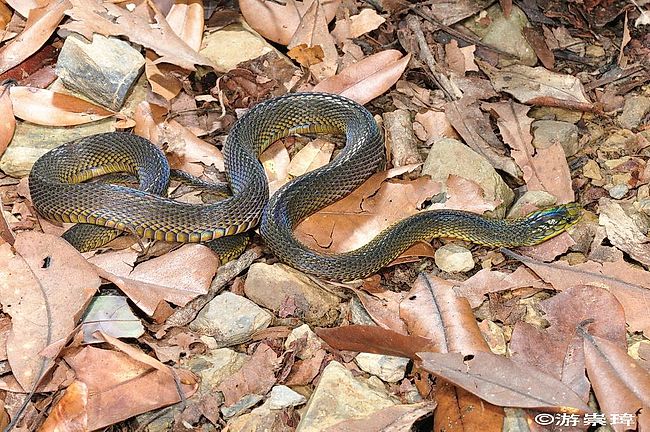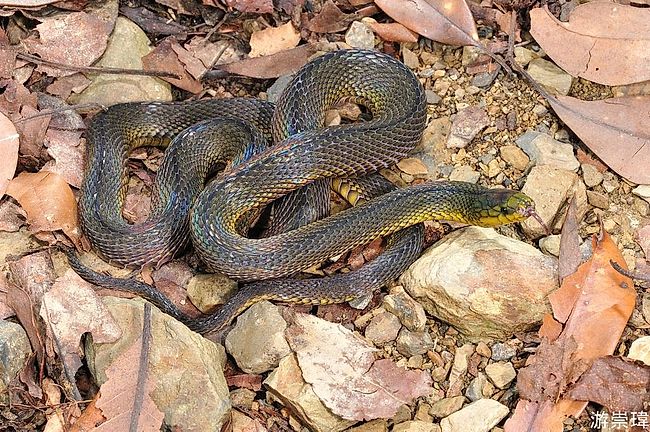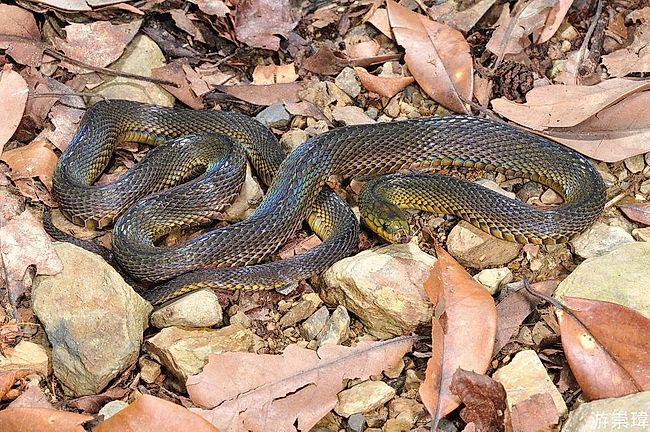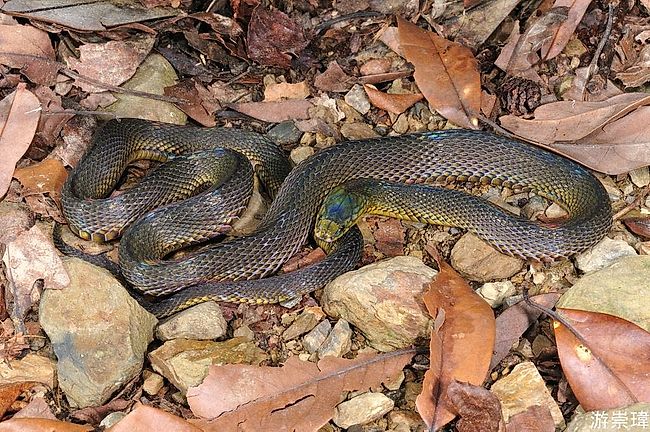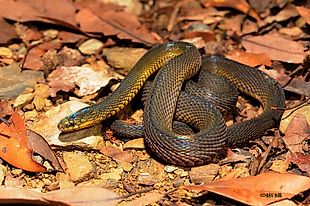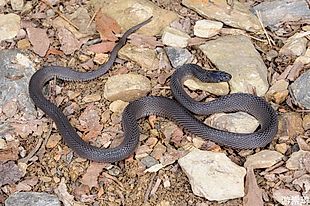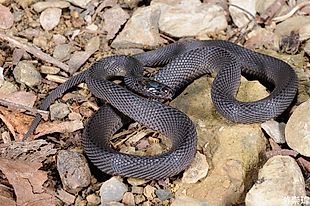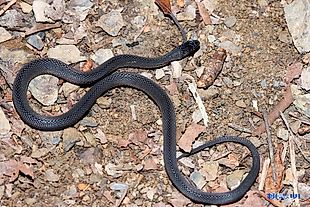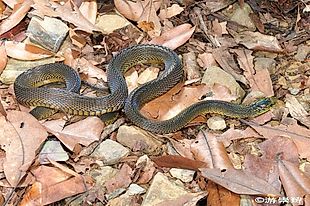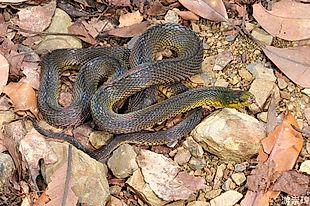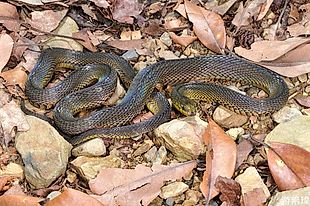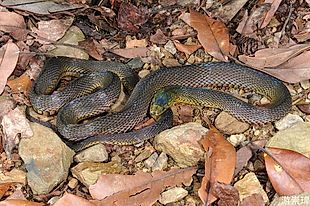Achalinus formosanus formosanus
Formosan Odd-Scaled Snake, Taiwan Burrowing Snake
台灣標蛇 (tai2wan1biao1she2)
Status: Not Protected
Non-venomous
Family
Colubridae, subfamily Xenoderminae
Max. length
90 cm
Occurrence in Taiwan
Central and southern Taiwan at altitudes of 1000-2000 m.
Global Distribution
Endemic to Taiwan.
Description
Small snake; total length up to 90 cm. Whole body is iridescent under light. There are 23-29 (mostly 27 at mid-body) rows of scales, which are keeled throughout body (and tail). The scales of an outermost row in upper face of postcloacal region are not much enlarged when compared with adjacent scales. Head is small, oval and not distinct from neck; body is slender; tail is moderately short. Eye is small, bead-like; iris is black, indistinct since it blends with dark head and pupil is round, black, and blends with rest of eye. Tongue has reddish stem and diffuse gray fork tips whose base is dark brown. The frontal is slightly broader than long; the parietal is nearly twice as long as broad and contacted posterolaterally by an enlarged paraparietal scale. Upper head, body and tail is uniform olive (dark-edged in anterior part of scale), grayish tan, or black. There is a dark longitudinal line on mid-dorsal row of scales on body and tail. Ventral surface is olive-yellow (dark-edged in anterior part of scale) or dark gray; the color is slightly darker on tail than on body. Whole body is usually black in the young. Anal scale is entire, and subcaudals are not divided.
Biology & Ecology
This nocturnal and terrestrial oviparous snake inhabits humid environments, such as montane forest floors, stone cracks or decayed plants. Earthworms, slugs, or frogs may be its staple food. It is not aggressive, and reports of bites by this snake are rare.
Etymology
The Greek origin of Achalinus seem unclear. Stejneger's "Herpetology of Japan and Adjacent Territory" explains "From a, without; chalinos, poison fang." However, chalinos actually means "bridle".
formosanus is Latin for "from Formosa (Taiwan)".
The origin of the character 標 in the Chinese name used in Taiwan (台灣標蛇, tai2wan1biao1she2)
is unclear. 台灣 means "Taiwan", 蛇 means "snake", but 標 can mean many things, among them
"mark" and "branch". These two are the most likely candidates for an explanation, as the
snake can resemble a dead branch on the forest floor, but also has a dark stripe along the
spine, which resembles a mark.








